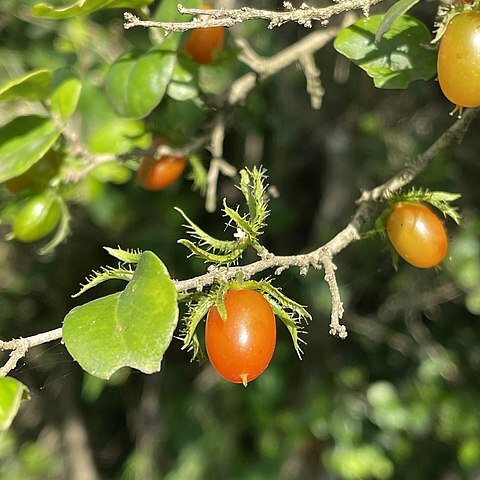A rigid spiny shrub. It can be a tree to 5 m tall. It is slender and spreading. The trunk can be 22 cm across. The branches can often have straight spines 2.5-8 cm long. The twigs and spines are usually slender. The leaves are simple and alternate. They are soft and thin. The leaves are 1.3-2.5 cm long by 1.3-1.9 cm wide. They can be heart-shaped or oval. The male and female flowers occur on separate trees. The flowers are small and cream or green. The male flowers occur in small clusters in the axils of leaves and the female flowers are single and on short stalks. The fruit is an oval berry. It is fleshy and 1.3 cm across. It becomes bright red. The fruit are edible.
Tree or shrub, 0.6-6.1 m high, dioecious, armed with spines. Leaves alternate, petiolate; ovate to elliptic-ovate, blade thin and membranous, 3-5-veined from base, margins entire to crenate. Male flowers in fascicles of 3-6, pedicellate; calyx 4-or 5-lobed; corolla absent; stamens 15. Female flowers solitary or in fascicles of 2 or 3, pedicellate; calyx 5-lobed, lobes fringed with stipitate glands; corolla absent; styles 2; ovary unilocular, 2 reduced placentas, each with 1 ovule. Flowering time July-Nov. Fruit ellipsoid to ovoid berry, glabrous, orange to scarlet-red.
Like D. rotundifolia but leaves thinner in texture, narrower and usually truncate or cordate at base, sepals in fruits fringed with stalked glands and seeds hairy.


